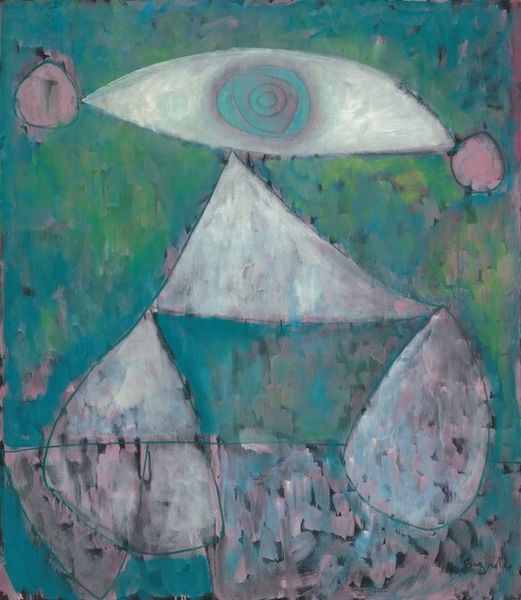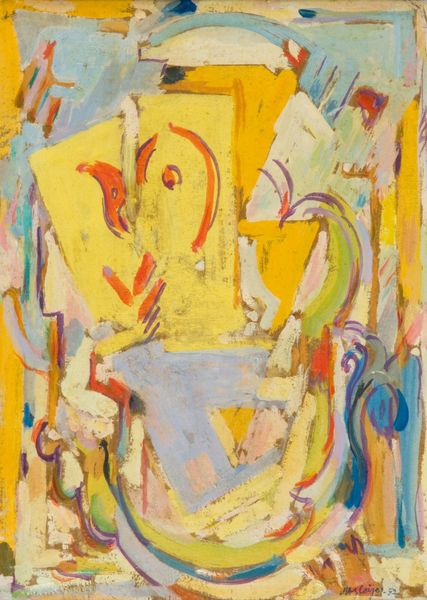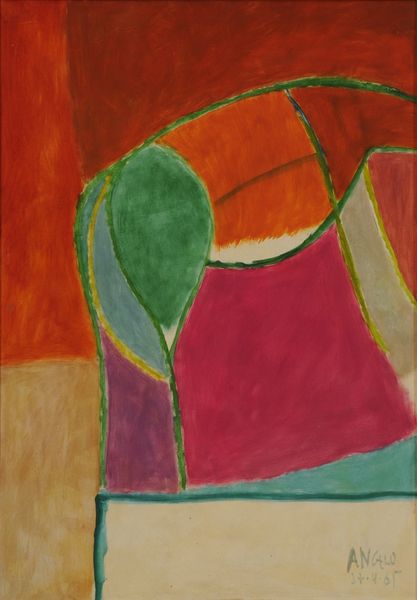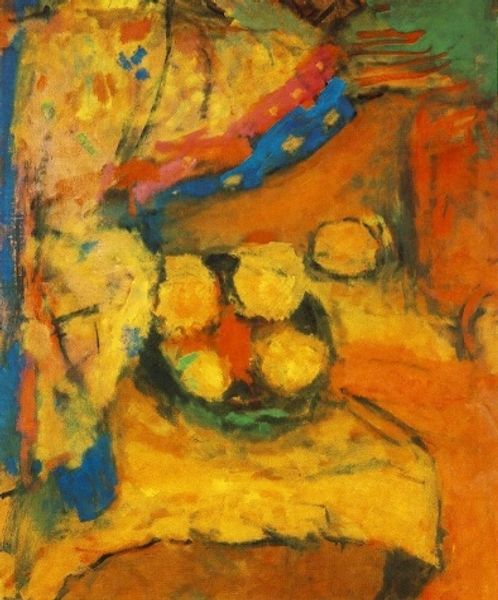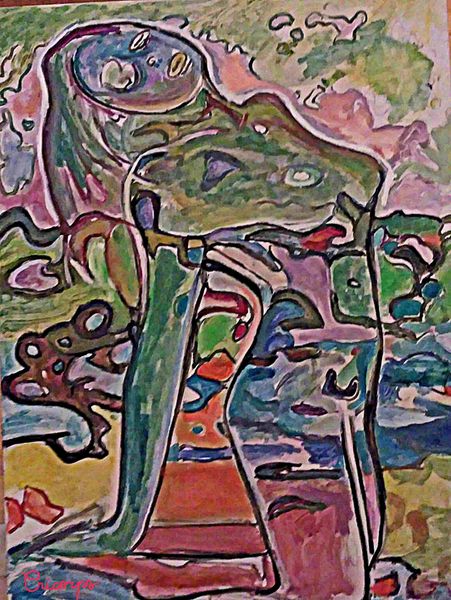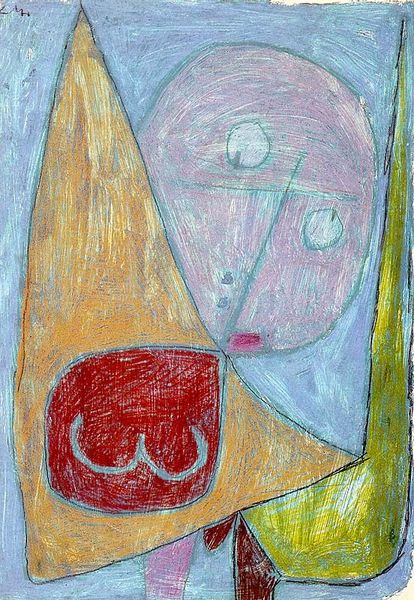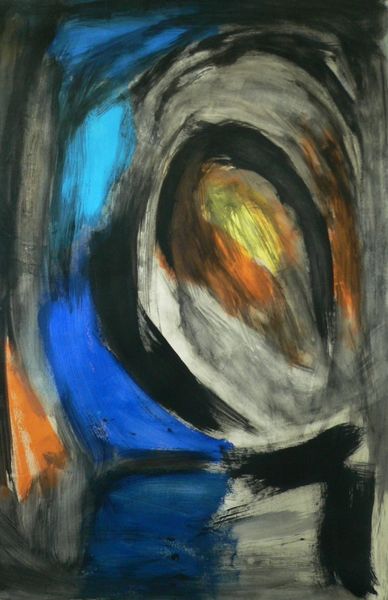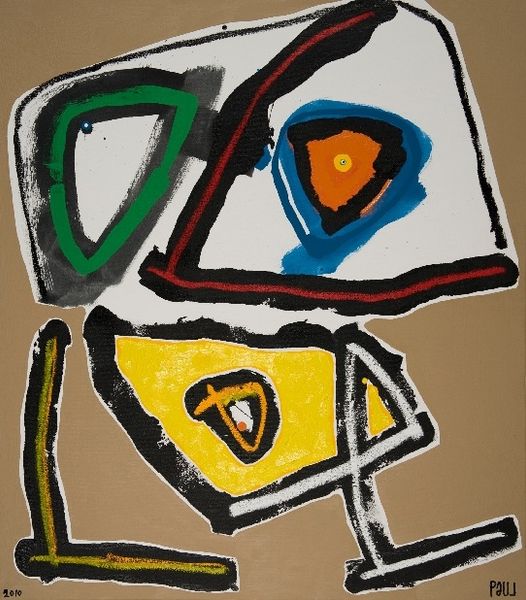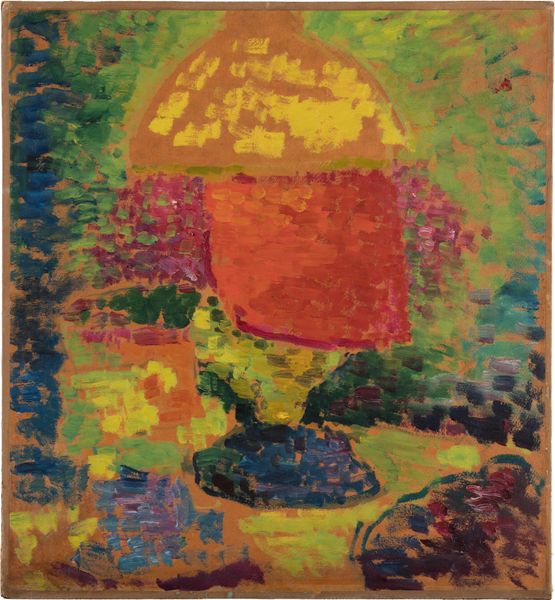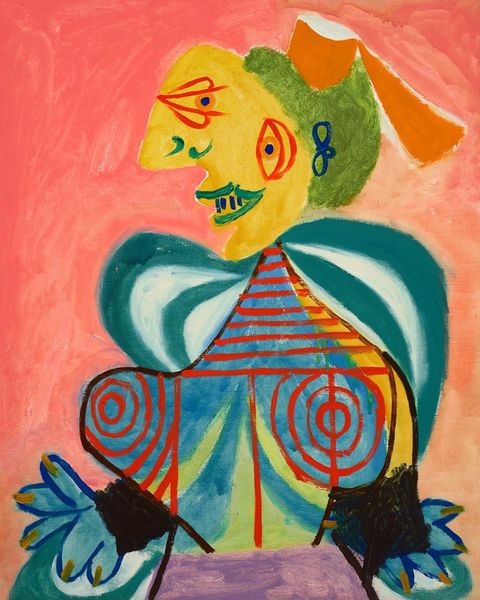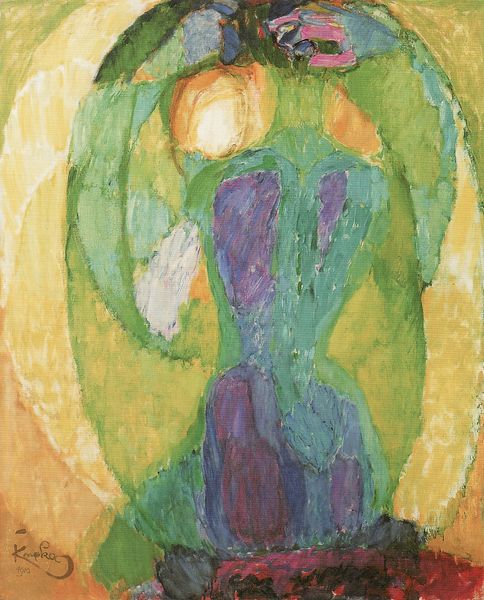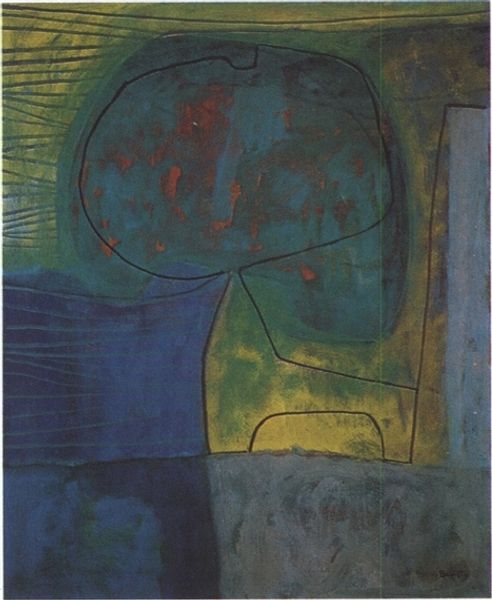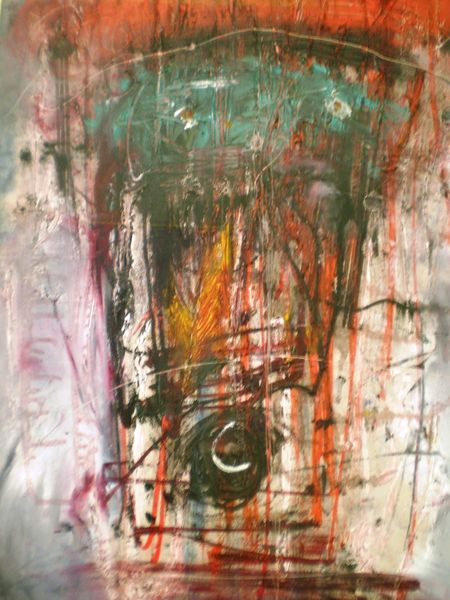
Copyright: William Baziotes,Fair Use
Editor: Here we have William Baziotes’s “Dwarf” from 1947, an intriguing painting done in acrylic. There's something almost playful yet unsettling about this abstract figure. What’s your perspective on this work? Curator: Considering it from a materialist perspective, notice the layered application of paint. Baziotes builds up the surface, revealing his process. The rough texture and visible brushstrokes become integral to the work's meaning. What do those materials communicate about postwar art making, would you say? Editor: I guess the roughness signals a rejection of pre-war polish, maybe an embrace of raw, authentic expression. Like the materials are "honest." Curator: Precisely. Think about the economic context. Acrylic paint became increasingly accessible after the war. Its use signifies a shift away from traditional, often more expensive, oil paints. It democratizes the process, placing value on the act of creation itself, the labor. The seemingly arbitrary biomorphic shapes too suggest that this "dwarf" wasn't just created, but emerged through materiality, challenging conventional figure painting methods. Do you see hints of automatism here? Editor: Yes! Especially in the under layers, and the intuitive placement of those jagged, tooth-like shapes above. It’s like the hand is leading the mind, not the other way around. The work itself IS the labor. Curator: Exactly! It speaks to a cultural embrace of the unconscious, echoing surrealist ideas, yet grounded in very real, tangible substances. Its production is inextricably linked to its meaning and impact. What does focusing on materiality change about the figure, or about us and our perception of it? Editor: It forces us to consider art-making as a tangible, laborious, process, not just the manifestation of some artist’s genius. It reveals what the means of art creation were capable of! Curator: Absolutely, it bridges high art with more accessible craft production while exposing the role of art consumption in broader markets of materials. Thinking about art making that way changes a lot, doesn't it? Editor: Definitely. Looking at art through the lens of materials has given me a completely fresh appreciation for Baziotes' work. Thanks!
Comments
No comments
Be the first to comment and join the conversation on the ultimate creative platform.
